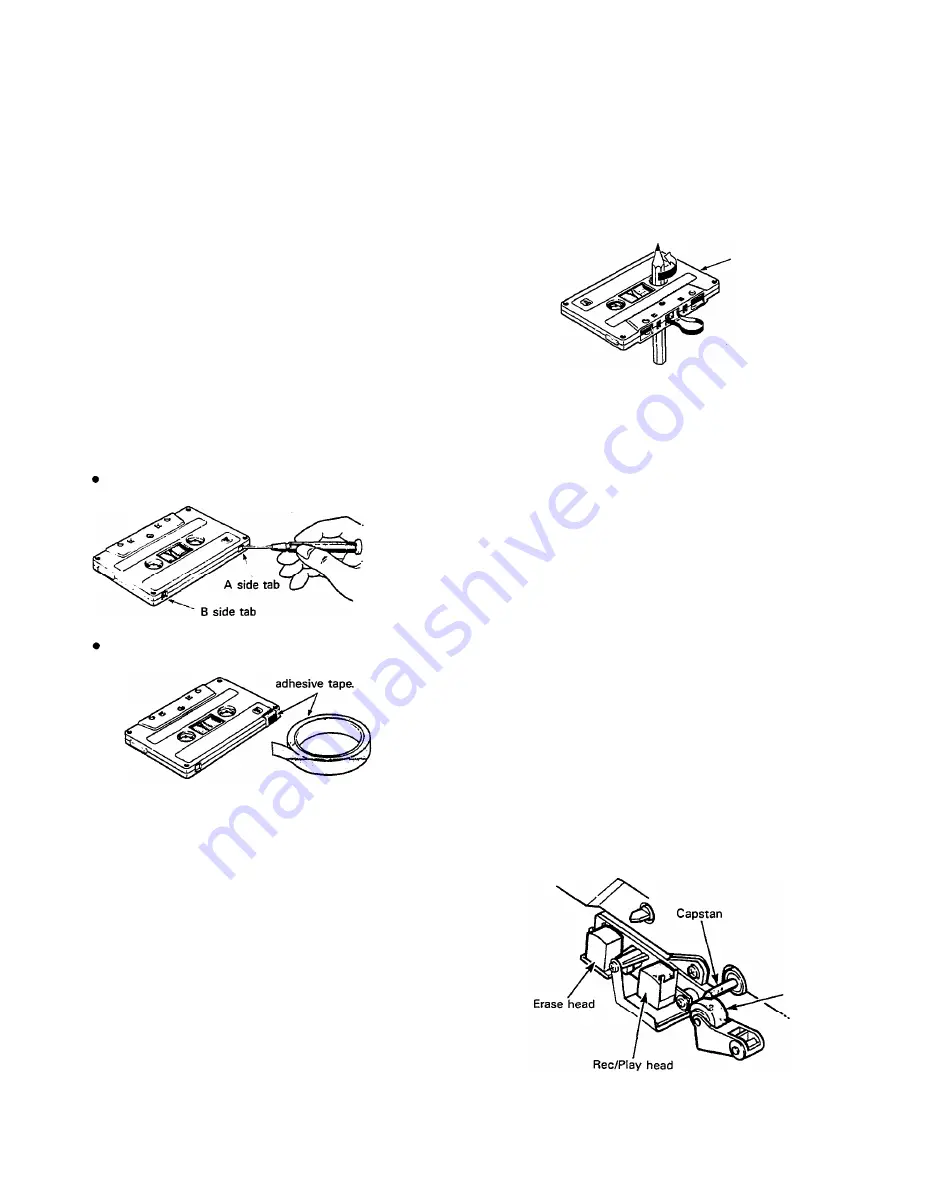
ABOUT CASSETTE TAPES
This unit is designed to be used
only
with Chrome-
position tape,
and will not work properly with Ferri-
chrome tape formulations. CrO
2
tape (Bias: HIGH; EQ:
70µ should be used. Also, the use of C-120 tapes is
not recommended because they exhibit poorer perfor-
mance, and can be the cause of equipment failure.
l
Preventing accidental erasure of recordings
To keep from inadvertently erasing a prized recording, all
cassette tapes have record protection tabs along the top
edge of the cassette shell. If this tab is broken out using
a screwdriver or any other appropriate implement, it will
not be possible to record on the corresponding side of
the tape. This will protect your recordings from accidental
erasure. For 4-track recording, it’s necessary to break out
the tabs for both the A and B sides of the tape.
When you’d like to record over a tape with the tabs
broken out, just cover the holes (where the tabs were)
with tape.
PREVENTING ACCIDENTAL TAPE ERASURE:
Break off the tab
with a screwdriver or
similar implement.
RECORDING OVER A TAPE WITH THE TABS BROKEN OUT:
Cover the hole with
l
Playing tapes recorded on other cassette
recorders
When playing Normal-position tapes, or tapes encoded
with Dolby B noise reduction the MT2X, the following
steps are advised:
1) Playing Normal-position tapes —
move the HI
equalizer fader in the "+" direction to boost the high
frequencies until the sound is satisfactory.
2) Playing tapes encoded with Dolby B NR —
put the
dbx switch in the “OFF” position, and move the HI
equalizer fader in the "-" direction to reduce the
high frequencies until the sound is satisfactory.
l
Taking up tape slack
If the tape is used when it is slack, or some portion of
the tape is out of the cassette shell, there is a risk it
may become tangled around the capstan or pinchroller.
In order to correct this, insert a pencil or ballpoint pen
into the center of one reel, and rotate to take up loose
tape slack.
Cassette shell
l
Storing cassette tapes
To prevent tape slack, fit a stopper into the tape or keep
tapes in their cases. Do not store tapes in direct sunlight,
or in places with high heat or humidity, as this may
damage the tapes. Also, keep the tapes away from
magnetic fields, such as near televisions or speakers,
because the recordings can be erased or sonically altered
to some degree.
l
MAINTENANCE
As a good general rule, the tape heads, pinchroller and
capstan should be cleaned before each recording, thus
ensuring the best audio quality.
After the deck has been used for a period of time, the
heads, pinchroller, and capstan will become dirty. This
increases noise and uneven rotation, leading to a
deterioration in sound quality. Therefore, periodic clean-
ing and demagnetization is a must to preserve optimal
audio performance.
Use cotton swabs and alcohol or head cleaning fluid
(available in most all audio stores) to clean the heads,
capstan, and pinchroller. Do not use rubbing alcohol as
this contains mineral oil which can damage the
mechanism. Keeping the heads clean is essential for
good recordings. For demagnetization, use a quality head
demagnetizer, and follow the instructions carefully.
Pinchroller
*
It’s important to keep all parts clean!
15
















































